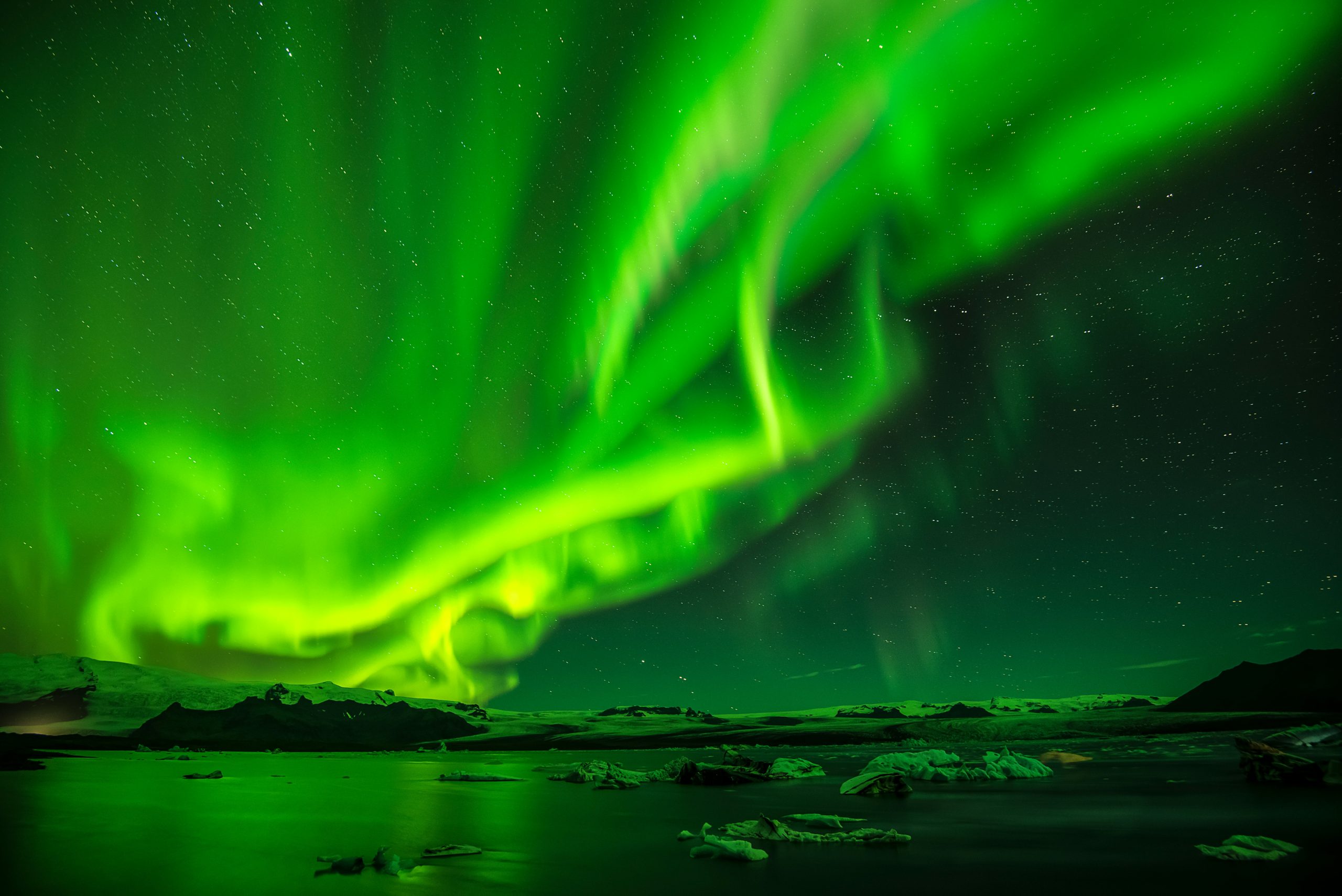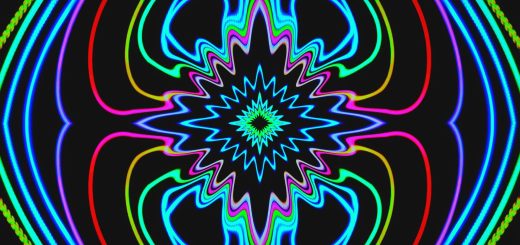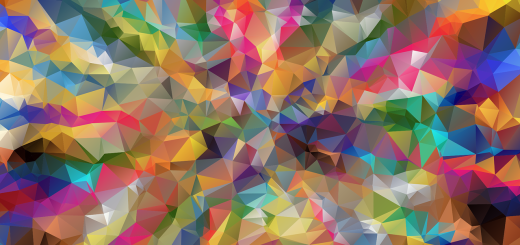Exploring the Myths of Creation Across Cultures

Before diving in, please note: This post is for informational purposes only. If you’d like to know more about how we approach topics, feel free to check out our friendly Disclaimer Page.
Hey there, amazing readers! 🖐️ Just a quick note: yes, we know there are a lot of ads here. Trust us, we get it—it’s not the prettiest look, but they help us keep this blog alive and kicking. Those pesky little ads cover the costs of all the behind-the-scenes magic, from hosting and tech stuff to creating content we hope you’ll love.
We’re committed to delivering quality posts, and your support (even just sticking around despite the ads) means everything to us. So, bear with us, and thanks for helping us keep the good vibes rolling. Now, on to the fun stuff! 😉
TRANSLATE BUTTON AT THE END OF THE ARTICLE
A Quick Overview
Creation myths have fascinated humanity for centuries.
They are stories that tell us how the universe, the Earth, and life came to be.
Every culture has its unique narratives that reflect their values, beliefs, and the environment they inhabit.
From the cosmic chaos of ancient Sumer to the harmonious balance celebrated in Indigenous tales, these stories encompass a rich tapestry of human thought.
Let’s dive in and explore these captivating narratives, examining their themes, characters, and the wisdom they impart.
Understanding Creation Myths: A Global Perspective
Creation myths serve as the foundation for understanding the universe’s origins.
They are not mere stories; they are a lens through which cultures perceive their reality.
From the ancient Egyptians to Indigenous peoples of the Americas, these tales reveal how societies made sense of their existence.
Take, for instance, the Judeo-Christian narrative of Genesis.
It presents a structured account of creation, highlighting the role of a singular, omnipotent God.
In stark contrast, the Hindu creation story celebrates multiple deities and a cyclical conception of time, where creation, preservation, and destruction are interlinked.
Across the globe, these myths often serve practical purposes.
They explain natural phenomena and provide moral lessons.
They may also reinforce social structures and cultural identities.
These stories are rich with symbolism and deeply rooted in the traditions of the people who tell them.
In many African cultures, creation myths emphasize communal life, linking the origins of humanity to the land.
For instance, the Dogon people of Mali describe a complex cosmogony involving the star Sirius and a creator god named Amma.
This story not only explains the cosmos but also establishes cultural values around community and spirituality.
As we explore these narratives, it becomes clear that creation myths reflect the social, environmental, and spiritual landscapes of their cultures.
They are dynamic stories that evolve with the people who tell them, ensuring their relevance through generations.
The Role of Nature in Various Creation Tales
Nature plays a pivotal role in many creation myths.
It shapes the narrative and serves as the backdrop for the unfolding events.
In many cases, the elements of earth, water, air, and fire are personified, becoming integral characters in the story.
For example, in the Enuma Elish, the Babylonian creation myth, the goddess Tiamat represents the saltwater ocean, while Marduk embodies fresh water.
Their battle is not merely a clash of forces; it symbolizes the struggle between chaos and order, reflecting humanity’s relationship with nature.
Similarly, in the Maori creation story, the Earth goddess Papa and the sky god Rangi personify the land and sky.
Their separation by their children symbolizes the importance of balance in the natural world.
This narrative resonates deeply with the Maori belief in respect for the environment and the interconnectedness of all living things.
In Indigenous Australian cultures, creation stories often involve ancestral beings who shape the land.
These tales are not just historical accounts; they are living stories that guide contemporary interactions with nature.
For instance, the Dreamtime myths illustrate the spiritual significance of the land, emphasizing stewardship over exploitation.
Nature, in these narratives, is not just a setting but a character.
It influences the lives of the people and their beliefs.
This connection underscores the importance of understanding and respecting our natural environment.
Light vs. Darkness: A Common Theme in Mythology
One of the most prominent themes in creation myths is the dichotomy of light and darkness.
This theme often symbolizes the struggle between good and evil, knowledge and ignorance, or order and chaos.
In many cultures, the emergence of light signifies the beginning of life and awareness.
For instance, in the Genesis account, God creates light on the first day, separating it from darkness.
This act serves as a metaphor for enlightenment, a theme that resonates through many religious traditions.
In contrast, darkness often represents the unknown, chaos, or even malevolence.
In Norse mythology, for example, the primordial void, known as Ginnungagap, exists before the creation of the world.
The interplay between light and darkness in these stories reflects humanity’s quest for understanding in a world filled with uncertainties.
This duality appears in various forms across cultures.
In ancient Egypt, the sun god Ra battles the serpent Apophis each night, representing the eternal struggle against chaos.
The triumph of Ra symbolizes hope, renewal, and the cyclical nature of life.
Light and darkness also shape human experience.
Many cultures hold festivals celebrating the return of light, such as Diwali in India.
These celebrations are not just about the physical return of the sun; they embody the triumph of good over evil and hope over despair.
In the end, the theme of light versus darkness resonates deeply.
It connects us to our shared human experience, reminding us of the dualities we navigate every day.
Cosmic Egg: The Birth of Worlds in Diverse Cultures
The concept of a cosmic egg is a fascinating motif found in various creation myths around the globe.
This egg often symbolizes potential and the beginnings of the universe.
In Hindu mythology, the universe is born from a golden cosmic egg called Hiranyagarbha.
From this egg, Brahma, the creator god, emerges to bring order to chaos.
This imagery conveys the idea that within chaos lies the potential for creation, a powerful metaphor for new beginnings.
Similarly, in Chinese mythology, Pangu is said to have hatched from a cosmic egg.
He separated the heavens from the earth, shaping the world as we know it.
This story emphasizes the theme of sacrifice, as Pangu’s body ultimately becomes the mountains, rivers, and skies.
The cosmic egg motif appears in Finnish mythology as well, where the world is formed from the fragments of a shattered egg.
This narrative highlights the idea that creation can arise from destruction, which resonates with many cultures’ experiences of renewal after hardship.
In many Indigenous cultures, the cosmic egg is less literal but still serves as a symbol of origins.
It represents the interconnectedness of all life and the cycles of existence.
These stories remind us that life is born from something greater than ourselves.
The cosmic egg serves as a bridge between cultures.
It underscores the universality of creation myths while celebrating the unique narratives that shape each tradition.
Divine Beings: Gods and Goddesses in Creation Stories
The presence of divine beings in creation myths adds depth and complexity to these narratives.
Gods and goddesses often embody various natural forces and human traits, shaping the world through their actions.
In ancient Mesopotamia, the god Enlil played a crucial role in the creation of humanity.
He shaped humans from clay and breathed life into them, reflecting the belief that divinity is responsible for human existence.
This narrative emphasizes the connection between the divine and the mortal.
In contrast, the Egyptian pantheon features a multitude of gods involved in creation.
Atum, the first god, creates himself and subsequently gives rise to other deities.
This narrative highlights the interconnectedness of all beings and the cyclical nature of creation.
The role of goddesses in these stories is equally significant.
In many cultures, female deities symbolize fertility, nurturing, and the Earth itself.
In the Greek myth of Gaia, the Earth is personified as a goddess who births the sky, mountains, and seas.
This connection between femininity and creation underscores the importance of motherhood in many cultures.
Divine beings also serve as moral compasses in these narratives.
They set the standards for human behavior and provide lessons on balance, justice, and respect for nature.
In exploring the roles of gods and goddesses, we gain insight into the values and beliefs of different cultures.
These figures become archetypes that resonate with our understanding of existence.
Humanity’s Origin: From Clay to Cosmic Dust
The origins of humanity are a central theme in many creation myths, revealing how different cultures understand their place in the universe.
Stories of humanity’s beginnings often reflect societal values, beliefs, and relationships with nature.
In the Biblical account, humanity is formed from dust, emphasizing our humble origins.
The act of divine breath animating the clay figurine signifies the connection between the divine and human life.
This narrative underscores the value of life as a sacred gift.
In contrast, many Indigenous cultures view humanity as an integral part of the natural world.
For instance, in some Native American traditions, people are seen as the caretakers of the Earth, born from the land itself.
This perspective fosters a profound respect for nature and reinforces the idea of stewardship.
The Sumerians also offer a unique perspective on humanity’s origin.
According to their myth, humans were created to serve the gods.
This narrative reflects the societal structure of ancient Sumer, where hierarchy and service were deeply ingrained in culture.
In African folklore, the creation of humanity often involves divine intervention and community.
The stories highlight the importance of unity and cooperation in human existence.
This communal aspect emphasizes the interconnectedness of all people and their shared responsibility for one another.
These diverse narratives about humanity’s origins reveal the rich tapestry of beliefs that shape our understanding of who we are.
They remind us that our stories are deeply intertwined with the land, the cosmos, and each other.
The Influence of Geography on Creation Narratives
Geography profoundly impacts the creation myths of a culture.
The environment shapes the narratives, influencing the characters, themes, and moral lessons embedded in these stories.
For example, cultures living near rivers often incorporate water into their creation myths.
The Nile played a crucial role in Egyptian mythology, with the river symbolizing fertility and life.
The stories of gods and goddesses are often intertwined with the cycles of the Nile, reflecting its significance in daily life.
In contrast, cultures from arid regions may emphasize the struggle for survival in their narratives.
The Aboriginal people of Australia have creation stories that highlight the harshness of the land and the importance of water sources.
Their tales often reflect a deep respect for the environment and the wisdom gained from generations of living in harmony with it.
Mountainous terrains also shape creation myths.
In Hinduism, the Himalayas are considered sacred, and many stories involve deities residing in these majestic mountains.
This reflects the cultural reverence for nature’s grandeur and its spiritual significance.
The interaction with local fauna and flora also influences these narratives.
For instance, in many Indigenous cultures, animals play significant roles in creation stories, serving as totems that embody the spirit of the land.
These connections foster a sense of belonging and responsibility toward the environment.
Geography is not just a backdrop; it becomes an active participant in the storytelling process.
These myths weave a narrative tapestry that reflects the diversity of human experience across the globe.
Stories of Chaos: Order Emerging from the Void
Many creation myths begin in chaos, portraying the universe as a formless void before order emerges.
This theme speaks to the transformative power of creation and the balance between chaos and harmony.
In the Greek myth of Chaos, the primordial being represents the void from which everything else arises.
This narrative highlights the idea that from chaos, order is born.
The emergence of Gaia, the Earth, signifies the beginning of creation and the establishment of life.
In the Egyptian creation myth, the god Atum emerges from the chaotic waters of Nun, symbolizing the birth of the cosmos.
He creates the other gods and establishes the natural order, emphasizing the cyclical nature of existence.
The concept of chaos also appears in the Babylonian Enuma Elish, where the goddess Tiamat represents primordial chaos.
Her defeat by Marduk signifies the triumph of order over chaos and reflects humanity’s struggle for stability in an uncertain world.
This theme resonates deeply with our own experiences.
Life often feels chaotic, yet we find ways to create order and meaning.
These creation myths remind us that chaos can give rise to beauty and balance.
Ultimately, the emergence of order from chaos is a powerful metaphor for life.
It reflects our resilience and adaptability in navigating the challenges we face.
Mythical Creatures and Their Role in Creation
Mythical creatures often play significant roles in creation myths, serving as symbols for various forces and ideals.
These beings add depth to the narratives and illustrate the connection between humanity and the divine.
In many cultures, dragons represent power and chaos.
In Chinese mythology, the dragon is a symbol of strength and good fortune, while in European lore, dragons often embody destruction.
Their portrayal varies widely, highlighting the cultural significance attached to these creatures.
In Native American myths, the Thunderbird is a powerful figure associated with storms and creation.
This majestic creature is often depicted as a protector of the Earth, playing a vital role in maintaining balance.
The Thunderbird symbolizes the interconnectedness of all living beings.
Similarly, the Great Serpent in African mythology represents fertility and creation.
In various narratives, this serpent is involved in the shaping of the land and the emergence of life.
The duality of the serpent—both feared and revered—reflects the complexities of nature.
In many Polynesian myths, the demi-god Maui embodies human qualities and divine power.
His adventures often lead to significant changes in the landscape, such as fishing up islands or capturing the sun.
Maui’s character embodies the spirit of exploration and ingenuity.
These mythical creatures serve as symbols of humanity’s hopes, fears, and aspirations.
They remind us that creation is often a collaborative effort between the divine and the mortal.
Oral Traditions: Passing Down Creation Myths
Oral traditions are crucial for preserving and sharing creation myths.
Through storytelling, cultures pass down their beliefs, values, and history from generation to generation.
In Indigenous cultures, storytelling is an art form that conveys profound wisdom.
Elders often recount creation stories during ceremonies, connecting younger generations to their heritage.
These narratives are not just entertainment; they are a means of education and cultural preservation.
In African tribes, griots serve as storytellers, sharing creation myths and historical tales.
Their performances combine music and drama, making the stories engaging and memorable.
This oral tradition fosters a sense of community and belonging.
In contrast, Western cultures have historically favored written texts, which can sometimes lead to the loss of nuance.
However, oral storytelling remains powerful in many communities, serving as a way to keep cultural identities alive.
The art of storytelling allows for adaptability.
As societies change, creation myths can evolve, reflecting new realities while retaining their core messages.
This flexibility ensures their relevance across generations.
Oral traditions are vibrant and dynamic.
They breathe life into creation myths, allowing them to resonate deeply within cultures.
This shared oral heritage fosters unity and connection among people.
Modern Interpretations of Ancient Creation Tales
As we navigate the modern world, ancient creation myths continue to inspire new interpretations.
These stories evolve to reflect contemporary values and issues, making them relevant in today’s context.
In literature and cinema, creators often revisit these myths, reimagining them for new audiences.
For example, Neil Gaiman’s "American Gods" intertwines various creation myths to explore themes of belief and identity in a modern setting.
This blend of ancient and contemporary resonates with readers and viewers alike.
Artists also draw inspiration from creation myths, using visual mediums to reinterpret these narratives.
Contemporary art often reflects the themes of creation, chaos, and humanity’s relationship with nature, showcasing the enduring power of these stories.
In academic circles, scholars examine these myths through various lenses, including psychology, sociology, and anthropology.
This interdisciplinary approach sheds light on the shared human experience and the universal themes that transcend time and culture.
Furthermore, as societies grapple with issues like climate change and social justice, creation myths offer valuable insights.
They remind us of our interconnectedness and the responsibilities we hold toward one another and the Earth.
Modern interpretations of ancient tales enrich our understanding of creation myths.
They serve as a reminder that these narratives are alive and evolving, reflecting the ever-changing tapestry of human experience.
Celebrating Diversity: Connecting Through Creation Myths
Exploring creation myths from various cultures reveals the incredible diversity of human thought and belief.
Despite differences, these narratives often share common themes, highlighting our shared humanity.
By celebrating diversity, we foster empathy and understanding across cultures.
Creation myths remind us of our interconnectedness, offering insights into the values and experiences that shape our identities.
Engaging with creation myths can also inspire dialogue and exploration.
By sharing our stories, we create opportunities for learning and connection.
This exchange enriches our understanding of the world and strengthens the bonds between cultures.
In a globalized society, embracing diversity is essential.
Creation myths serve as a bridge, connecting us to the wisdom of our ancestors and the experiences of others.
They remind us that, despite our differences, we share a common quest for meaning and understanding.
As we delve into these narratives, we honor the rich tapestry of human experience.
We celebrate the beauty of our differences while recognizing the threads that unite us.
Conclusion
Creation myths are more than just stories; they are windows into the beliefs, values, and experiences of cultures around the world.
They connect us to our past and offer insight into our present.
As we explore these narratives, we discover themes of chaos and order, the role of nature, and the significance of divine beings.
These tales remind us that we are part of a larger story, one that transcends geographical boundaries and cultural differences.
By celebrating the diversity of creation myths, we foster empathy and understanding, enriching our shared human experience.
So, the next time you hear a creation story, take a moment to appreciate the wisdom it holds and the connections it forges.

The Enlightenment Journey is a remarkable collection of writings authored by a distinguished group of experts in the fields of spirituality, new age, and esoteric knowledge.
This anthology features a diverse assembly of well-experienced authors who bring their profound insights and credible perspectives to the forefront.
Each contributor possesses a wealth of knowledge and wisdom, making them authorities in their respective domains.
Together, they offer readers a transformative journey into the realms of spiritual growth, self-discovery, and esoteric enlightenment.
The Enlightenment Journey is a testament to the collective expertise of these luminaries, providing readers with a rich tapestry of ideas and information to illuminate their spiritual path.
Our Diverse Expertise 🌟
While our primary focus is on spirituality and esotericism, we are equally passionate about exploring a wide range of other topics and niches 🌍📚. Our experienced team is dedicated to delivering high-quality, informative content across various subjects ✨.
To ensure we provide the most accurate and valuable insights, we collaborate with trusted experts in their respective domains 🧑🏫👩🏫. This allows us to offer well-rounded perspectives and knowledge to our readers.
Our blog originally focused on spirituality and metaphysics, but we’ve since expanded to cover a wide range of niches. Don’t worry—we continue to publish a lot of articles on spirituality! Frequently visit our blog to explore our diverse content and stay tuned for more insightful reads.







